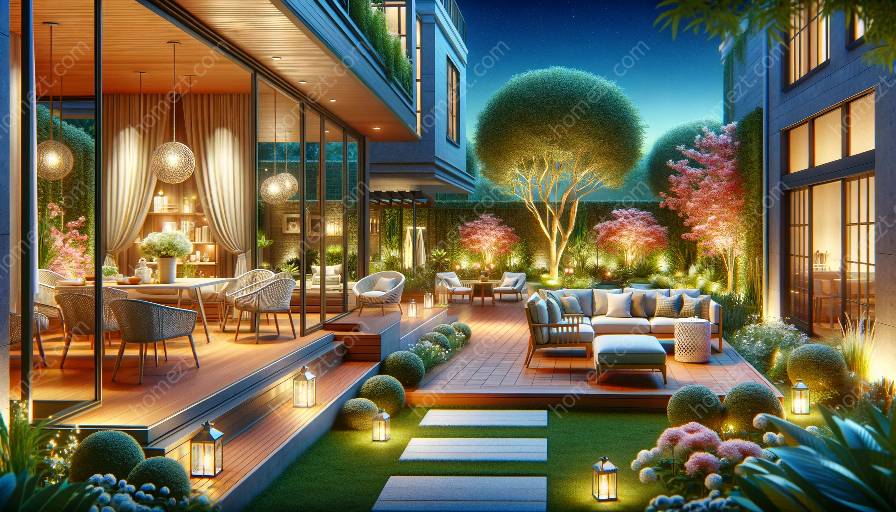Creating a sustainable garden goes beyond just aesthetics. It involves choosing plants and flowers that are low-maintenance, native to the area, and beneficial to local ecosystems. In this comprehensive guide, we'll explore essential plants and flowers that are perfect for sustainable gardens, and how to integrate them into outdoor living spaces and garden design. Additionally, we'll discuss how these green elements can be incorporated into interior design and styling, bringing nature's beauty into living spaces.
Choosing Essential Plants and Flowers
When planning a sustainable garden, it's important to select plants and flowers that are well-suited to the local climate and soil conditions. Native plants are a smart choice as they are adapted to the specific environment, require less water and maintenance, and provide natural food and habitat for local wildlife.
Some essential plant choices for sustainable gardens include:
- 1. Perennials: These are the backbone of a sustainable garden, returning year after year without the need for replanting. Examples include lavender, echinacea, and black-eyed Susans.
- 2. Succulents: Known for their water efficiency, succulents are perfect for dry and arid climates. They can be used as ground cover or in containers to add texture and color to the garden.
- 3. Native Grasses: These provide structure and movement in the garden while serving as essential food and habitat for local birds and insects.
- 4. Pollinator-Friendly Flowers: Flowers such as bee balm, coneflowers, and butterfly weed attract bees, butterflies, and other pollinators, supporting the local ecosystem.
- 5. Edible Plants: Growing your own fruits, vegetables, and herbs not only provides fresh, sustainable food but also adds beauty and diversity to the garden.
Integrating Greenery into Outdoor Living Spaces and Garden Design
Once you've chosen the essential plants and flowers for your sustainable garden, it's time to integrate them into your outdoor living spaces and garden design. Here are some creative and practical ideas to bring greenery into your outdoor environment:
- 1. Vertical Gardens: Utilize walls or trellises to create vertical gardens, maximizing space and adding a unique aesthetic to the outdoor area.
- 2. Native Plant Borders: Create borders and hedges using native plants to define and enhance different areas of the garden.
- 3. Pollinator Gardens: Designate a specific area for pollinator-friendly plants to attract and support local wildlife, creating a thriving ecosystem.
- 4. Edible Landscaping: Incorporate edible plants and fruit trees into the garden design, combining sustainability with functionality and beauty.
- 5. Creative Containers: Use a variety of containers such as pots, planters, and hanging baskets to showcase different plants and flowers throughout the outdoor space.
Bringing Green Elements into Interior Design and Styling
Greenery can have a profound impact on interior spaces, creating a sense of calm and connection to nature. Here's how to seamlessly integrate essential plants and flowers into interior design and styling:
- 1. Indoor Plant Selection: Choose low-maintenance indoor plants that thrive in the available light and climate, such as snake plants, pothos, and peace lilies.
- 2. Living Walls: Install living walls or vertical gardens inside the home to add natural beauty while purifying the air and regulating humidity.
- 3. Botanical Accents: Incorporate botanical prints, patterns, and artwork into interior design to evoke a sense of tranquility and connection to the outdoors.
- 4. Functional Greenery: Use herbs and small edible plants as functional decor in the kitchen, providing fresh ingredients while adding visual interest.
- 5. Natural Light Enhancement: Position plants and flowers near windows and light sources to enhance natural lighting and create a bright, inviting atmosphere.
Conclusion
By carefully selecting essential plants and flowers for sustainable gardens and integrating them into outdoor living spaces, you can create a harmonious and eco-friendly environment that enriches both the natural landscape and your daily life. Furthermore, bringing green elements into interior design and styling allows you to extend the beauty and benefits of greenery into your indoor spaces, promoting a holistic approach to sustainable living.
Whether you're designing an outdoor oasis or transforming indoor spaces, the careful selection and integration of essential plants and flowers play a key role in creating sustainable, inviting, and visually stunning environments.


























